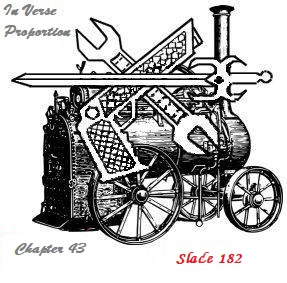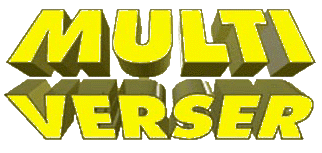
Patreon or PayPal Me keeps this site and its author alive. Thank you. |
Stories from the Verse
In Verse Proportion
Chapter 43: Slade 182
Table of Contents
Previous chapter: Kondor 186

Slade’s part in the invention process seemed to be pointing people in the right direction so they could do the research, build the models, and work out the bugs. That was fine. He was on hand to answer questions, explain what he knew of things like how radiators worked.
He lay awake in bed that night trying to decide what his next step should be. Was it time to move beyond the telegraph to the telephone? On the one hand, the telephone might make the telegraph obsolete before it was even produced; on the other hand, he somehow thought that long distance telephone service was going to require electronic amplification, and other than that it once used tubes and they were replaced by transistors, he had no clue how that worked.
Electronic amplification--that was going to be a sticking point for a lot of projects. But wait--didn't Edison invent the record player before anyone did anything with amplifiers? He’d seen the film--that was another thing, Edison invented motion pictures, but there were a lot of steps in between. There was the lightbulb, maybe, although when he was in high school someone talked about how there was something called an arc projector in the auditorium, which created light by having an electric spark continuously jump between two pieces of something. He knew very little about that. But he did have some ideas.
The next morning as he and Shella reached the engineering department he called for students to gather. “O.K., I need a team to start on something different. We’re going to invent sound recording.”
There was a rustle of noise among the birds, and he waited for it to quiet.
“The thing about sound is that it is vibrations. You know that, I’m sure--you’ve got musical instruments, and people have figured out how they make noise. But the vibrations of the instruments, and of our voices, cause vibrations in the air. Those vibrations hit something in our ears, causing a vibration there. That’s how we hear.”
He cleared his throat, and continued. “Here’s the thing. Everything vibrates. If you make a noise loud enough and touch the table while it’s happening, you can feel the vibration in the table. But the vibration is the sound. If you can create an image of the vibration, you can then use that image to reproduce that sound. How do we do that? Well, we need some kind of sort of soft material. I’m not sure what you have, but maybe wax, maybe clay. In my world we used something we called,” and he had to revert to English, “vinyl,” continuing in parakeet, “and then”, but then again in English “plastic”, “and I don’t know whether you have anything like those. But you form it into something with a smooth surface, a cylinder might be best but eventually disks will be more convenient, and then you have to make a machine that will move the material at a rapid but consistent speed, in a circle. The device then has a needle which moves down along the material just touching it, attached to a cone. As the material turns and the needle moves, you project sound into the cone, it causes the needle to vibrate, and this etches the vibrations into the material. You now have a record of the sound.
“I think you can use the same machine with a minor adjustment, but you have to let the material harden a bit so you’re not writing over the original sound. Place the needle on the track and have it follow the track as everything moves at the same speed, and the etching in the material should cause the needle to vibrate producing the same sound projected out of the cone.
“Frankly, you’re going to spend lifetimes perfecting this--but that’s not really an issue, because once you’ve got it working well enough to record short speeches and songs people are going to want to be able to hear these in their own homes. I’m sure you have famous singers and musicians, and famous orators, that most people will never hear in their lives. With this machine, you can deliver recordings of their voices and their music to homes anywhere in the world.
“Questions?”
Well, this time there were questions, but Slade did not have answers. He did explain what he meant by a cone, but mostly said, “We’ll have to work that out by experimenting.” Some people asked if they could be part of the team, or lead the team, or help the team, to which Slade deferred to the head of the engineering department as having the best knowledge of who would be good for the project. He stayed long enough to see a team created, and then went for a late lunch. He did not return to the department, but swung past the building site to see that work on the foundation had begun. He had never built a house, but this looked like it was progressing well.
That evening, after dinner, he commented to Shella, “Well, I guess we’ve earned our keep. We’ve invented three new industries.”
She looked at him. “What do you mean, m’lord?”
“We started with communications, then moved to hot water plumbing and heating, and today we added recording. In industrialized worlds, like this is becoming, those are all big things. I think we can let them work on these for a while, take a bit of a break.”
Stretched out on his bedding on the floor, he soon fell asleep as the day caught up with him.
There is a behind-the-writings look at the thoughts, influences, and ideas of this chapter, along with twenty other sequential chapters of this novel, in mark Joseph "young" web log entry #440: Changing Worlds. Given a moment, this link should take you directly to the section relevant to this chapter. It may contain spoilers of upcoming chapters.
As to the old stories that have long been here:

